Audiomoth Energy consuption estimates
4 March 2024 12:25pm
16 May 2024 8:37am
Reply removed by Admin (spam).
16 May 2024 9:34pm
We had this same issue, and found that the firmware version 1.9.2 was our issue. We bumped it back to 1.9.0 and our energy consumption was back to normal.
We record data for 7 hours a day (3.5 hour blocks), using sandisk extreme 64GB micro SD cards. We don’t use re-chargeable batteries, and the ARUs are set for 14-day periods before being collected. With the 1.9.2 firmware, for some reason they’d only record for maybe 9 days tops before dying. At firmware 1.9.0, we were back to our normal recording of minimum 14 days (although they often last longer). We tried different batteries, different energy saving settings, nothing worked besides bumping the firmware down. This issue was in both our brand new AudioMoths and 2-year old AudioMoths.
I hope this helps.
Technology for Environmental Governance in Kenya
15 May 2024 8:36am
15 May 2024 10:55am
Hello @nyokabi great question! What I know of is the following, hope it's helpful:
- WildlifeDirect's “Eyes in the Courtroom” project, which monitors wildlife crime cases in court to inform and support improvements to environmental law and prosecution. Think it utilizes some sort of app software.
- MIKE
16 May 2024 9:03pm
Thank you very much for this Esther.
I also came across Trade in Wildlife Information Exchange (TWIX) which is a enforcement tool for international wildlife trade.
Insect cameras in The Inventory
1 May 2024 9:26pm
2 May 2024 2:02pm
Hey @JakeBurton , nice work with The Inventory!
This is very aligned with some internal efforts going on in our community to map out devices, but also data and models eventually. It would be great if we find a way to make this two interoperable. We are still in the (very) alpha development phases, so it is quite open, but it would be super helpful to have some insight about the under-the-hood data structure that The Inventory is relying on, so we can figure out good ways to reliably map or info onto them.
Happy to chat further or set up a meeting!
@qgeissmann👀
3 May 2024 2:13pm
Thanks very much @LucaPego! Just to clarify, 'Products' does cover hardware, but it also includes software and databases as well. Basically anything that you can take and use in your work. Sounds like we should also be including models in that as well!
It would be great to see more databases and software listed and reviewed on there. We would also be interested to learn more about your internal efforts in your community and what overlap there is for sure. Could we set up a meeting?
16 May 2024 3:16pm
Hey there @JakeBurton , sorry, I did not see your message!
Why don't you shoot me an email with some tentative availability to luca.pegoraro (at) wsl.ch, and we take it from there?
Again sorry for the delay!
Operation Ferdinand - a Predator and Livestock Conflict Prevention Video Game!
23 June 2017 7:12pm
15 May 2024 10:36am
Hey @FleuryGS :)
Bright Frog Game Studios is producing some really cool environmental education video games that more people should know about! I've gone ahead and added it as an organisation entry on the Inventory #Bright Frog Game Studios where you can edit and add more information, sharing more about the insightful games you've developed like Operation Ferdinand.
Has anyone combined flying drone surveys with AI for counting wild herds?
14 April 2024 3:40pm
12 May 2024 6:46pm
I am working on wild horses and invasive species, also urban deer that are getting overpopulated.
12 May 2024 6:46pm
That is great, thanks so much!
14 May 2024 6:26pm
Drones have changed how we collect information and do surveys. Whether you’re new to drones or a pro wanting to use aerial data, knowing how to do a drone survey is essential.
Welcome to WILDLABS!
29 October 2015 5:16pm
13 May 2024 12:13pm
I have been working at the Forest Science and Technology Centre of Catalonia for more than 15 years as a maintenance manager and, in recent years, taking advantage of my training in electronics, giving support in technological projects related to its Area of Biology and Biodiversity Conservation. In recent years we have worked on projects of bioacoustics, species tracking with RFID (BIRDLOG), microcameras in nest boxes of bats and birds, and autonomous recorders of human presence in protected caves (LOGCAVE), among others.
Glad to participate in this platform, so useful to share and find resources related to this field !
13 May 2024 5:52pm
@sebjwallace Glad you gave iNaturalist a go, and happy to hear you enjoyed it. Now tell all your friends!
14 May 2024 2:48pm
Hi everyone,
We’ve emerged into the genomic age and it is a powerful approach to back wildlife conservation. However, sometimes it can be tricky to become familiar with technologies and the software to analyse genomic data.
I would like to present SequenceServer. It is a fantastic tool that enables you to analyse genomic data. The interface is designed to make life easy, and you don’t need lots of computational experience. Many different analysis approaches are possible and will certainly be valuable to the world of conservation.
You can try it out for free! And if you have any questions, please feel free to message me. The SequenceServer team is happy to discuss your research needs and offer support.
Let’s help protect Earth together.
Daniel
WILDLABS AWARDS 2024 - Developing AudioMoth for the detection of infrasonic elephant rumbles
11 April 2024 7:35am
13 May 2024 8:28am
Hi Alex,
Very cool, that would give us lots of room for collaboration since we are focussing on model development taking hardware restrictions and inference speed into account.
14 May 2024 12:49pm
Wow.. Really exciting to see this effort. Congratulations on the award!
I have been interested in this subject for a long time, as we have elephant-human conflicts in plenty in India (my country). Sometime back I had hacked a computer optical mouse as a seismic detector in order to study elephant intrusion into farmlands (where they are considered as pests). But I think we need more robust detectors. I am also considering laser led self-mixing as a technique to get a good alternative to expensive geophones. Wish you all the very best.
14 May 2024 12:50pm
Wow.. Really exciting to see this effort. Congratulations on the award!
I have been interested in this subject for a long time, as we have elephant-human conflicts in plenty in India (my country). Sometime back I had hacked a computer optical mouse as a seismic detector in order to study elephant intrusion into farmlands (where they are considered as pests). But I think we need more robust detectors. I am also considering laser led self-mixing as a technique to get a good alternative to expensive geophones. Wish you all the very best.
Fully-retrievable Satellite Tags for Seals?
10 April 2024 4:49pm
3 May 2024 8:08pm
Hi Courtney,
I haven't read through all the Wildlife computer options but I have heard of people using Zinc Anode disks as a type of slowly degrading attachment point for tags. We use these also as a backup for other types of releases on Oceanographic moorings etc. It would take some testing to see how the zinc could be attached or be small enough to degrade completely away from the pinniped but still be strong enough to hold a tag.....just some thoughts!
Cheers,
Stuart
7 May 2024 4:04pm
Honestly, no (at least not for wildlife applications).
I suspect for the manufacturing community it's a balancing act, and I am not confident that the manufacturing community has invested a lot of resources or effort to integrate sustainability in their tag designs specifically related to the materials. Reasons that come to mind are material durability and cost (both materials costs and cost to for R&D).
With that said, I think Stuart (below) makes a good suggestion...
14 May 2024 11:26am
We are ready to make efforts on materials, but today there are few solutions available. Today, our partners' R&D efforts are focused on renewable energies and the energy source's capacity. In the absence others solutions, and to take action, we have chosen to develop solutions to recover these tags, some of which are reusable (thanks to Gonio RXG-234 @ThomasGray). To date, thousands of tags have been recovered and some reused. This is the "upcycling" of science! It's a small step, but a great leap forward!
Using Dart Guns
3 May 2024 3:30am
11 May 2024 4:32pm
There's elk in Santa Clara county? I thought the nearest herds in the bay area were at the preserve in Point Reyes.
12 May 2024 10:07pm
Hello
There ate Tule Elk all up and down the Diablo Range now, from Livermore in the north to Carriso Plain at least. Here is an old map from 2017 (2016 data). We are working on new population studies now.Carrizo Thanks Mike
13 May 2024 5:21pm
Thanks for sharing - hadn't realized that.
Successfully integrated deepfaune into video alerting system
2 December 2023 11:15am
3 May 2024 3:07pm
Yeah. I’ve seen the video. Very nice. Good luck with that ! Let us know how it goes.
4 May 2024 12:44pm
Hi Thijs, the use of that inflatable device to scare off bears suggests that the location you are using it has significant power available.
Is this a common situation for the places in Romania that have bear trouble ? Because I think your other systems were running off batteries is that correct ?
12 May 2024 2:59pm
Yes, this system is designed to be installed near farms. We also have the repeller system with audio & light, that is battery & solar powered. This system is a "last line of defence". The blowers alone requires 1000 watts :)
4th International Workshop onCamera Traps, AI, and Ecology
9 May 2024 1:00pm
Harnessing large language models for coding, teaching and inclusion to empower research in ecology and evolution
9 May 2024 12:51pm
Check out this paper that reviews the current state of AI in conservation.
Indigenous communities and AI for Conservation
8 May 2024 12:32pm
8 May 2024 5:09pm
Thank you for this advice!
If you need a speaker for Variety hour, I would be happy to talk about the work we are doing in the Conservation Evidence Group to use LLMs for finding and reviewing evidence of conservation actions.
8 May 2024 7:04pm
Oh yeah that would be awesome! Let me email you to follow up. I assume you're working with Alec Christie then? He was sharing your team's work in our chatgpt discussion:
9 May 2024 10:26am
Yes, exactly! Alec and I are working together on this.
Remote Sensing & GIS Group Leadership
8 May 2024 4:25pm
Introduction to CT Textbook
22 November 2022 10:43am
9 December 2022 11:45am
yes this is an excellent point. I love what the WILDLABS group did with the state of conservation tech report. Thanks for the example.
16 January 2023 2:51pm
This would be awesome Andrew! Happy to help with some organization of this/identifying potential chapter authors.
I'm sure you know about this already, but there is also this book from Wich & Piel: https://www.amazon.com/Conservation-Technology-Serge-Wich/dp/0198850255
8 May 2024 4:19pm
Hi Andew,
Whatever became of your book? Also have you seen jupyterbook.org and mystmd.org? Both are free and open source software for publishing articles and books.
Best,
Vance
Data loggers for sewage monitoring
7 May 2024 3:51pm
Survey on European biodiversity monitoring communities
7 May 2024 3:39pm
Biodiversa+ is running a survey to map the European biodiversity monitoring landscape, identify opportunities for collaboration, and strengthen coordination for improved monitoring.
Voices of Sustainability: Perspectives from - Africa Wholesome Sustainability Explained: What is E-PIE
7 May 2024 3:06am
Using drones and camtraps to find sloths in the canopy
18 July 2023 7:39pm
3 May 2024 6:48pm
Thank you for the tip, Eve! In fact, in the area where the foundation works, there clearly are dry seasons, the past few years much drier than normal, where trees loose their leaves a lot.
6 May 2024 4:29pm
Yes, if the canopy is sparse enough, you can see through the canopy with TIR what you cannot see in the RGB. We had tested with large mammals like rhinos and elephants that we could not see at all with the RGB under a semi-sparse canopy but were very clearly visible in TIR. It was actually quite surprising how easily we could detect the mammals under the canopy. It's likely similar for mid-sized mammals that live in the canopy that those drier seasons will be much easier to detect, although we did not test small mammals for visibility through the seasons. Other research has and there are a number of studies on primates now.
I did quite a bit of flying above the canopy, and did not have many problems. It's just a matter of always flying bit higher than the canopy. There are built in crash avoidance mechanisms in the drones themselves for safety so they do not crash, although they do get confused with a very brancy understory. They often miss smaller branches.If you look in the specifications of the particular UAV you will see they do not perform well with certain understories, so there is a chance of crashing. The same with telephone wires or other infrastructure that you have to be careful about.
Also, it's good practice to always be able to see the drone, line-of-sight, which is actually a requirement for flight operations in many countries. Although you may be able to get around it by being in a tower or being in an open area.
Some studies have used AI classifiers and interesting frameworks to discuss full or partial detections, sometimes it is unknown if it is the animal of interest. I would carefully plan any fieldwork around the seasons and make sure to get any of your paperwork approved well before the months of the dry season. It's going to be your best chance to detect them.
7 May 2024 1:49am
Thank you for elaborating, @evebohnett ! And for the heads ups!
Mass Detection of Wildlife Snares Using Airborne Synthetic Radar
7 January 2024 6:50am
24 April 2024 7:45am
SYNTHETIC APERTURE RADAR WILL ALSO DETECT AND LOCATE CHAINSAWS, MOTORBIKES, BICYLCLES, FIREARMS, MACHETES in fact anything metal.
I have been concentrating on trying to get funding for Airborne Sythetic Aperture Radar on the basis of snare detection for 2 reasons:
- Detecting and prcisely locating snares will have the biggest conservation impact
- Initially running the detection algorithms will take place as post processing after a flight mission in the cloud. It is therefore betterr suited to statiic targets that will still be in the location recorded during the mission.
Post processing of the radar will shift to real-time onboard processing and reporting via a satellite connection, but this would take quite a lot more development.
6 May 2024 6:54pm
Very interested in making contact with on this topic please can you pop me an e-mail [email protected] or call me on 0825721314
Greetings,
Francois
6 May 2024 11:19pm
Great initiative!
Just a short note: any position to distinguish garbage from real snares?
Best!
Lufer@Landfeelings
ChatGPT for conservation
16 January 2023 10:04am
2 May 2024 9:39pm
In my experience, ChatGPT-4 performs significantly better than version 3.5, especially in terms of contextual understanding. However, like any AI model, inaccuracies cannot be completely eliminated. I've also seen a video showing that Gemini appears to excel at literature reviews, though I haven't personally tested it yet. Here's the link to the video: https://www.youtube.com/watch?v=sPiOP_CB54A.
4 May 2024 6:44am
While GPT3.5 is good for some activities, GPT-4 and GPT4-turbo are much better. Anthropic Claude is also very good, on a par with GPT4 for many tasks. As someone else has mentioned, the key is in the prompt you use, though chatGPT is continually being extended to allow more contextual information to be included, for example external files that have been uploaded previously. Code execution and image generation are also possible with the paid version of chatGPT, and the latest models include data up to the end of 2023 (I think). You can also include calls to openAI or other APIs programatically to include these in your workflows for assisting with a variety of tasks.
Regarding end results - as always, we're responsible for whatever outputs are ultimately published/shared etc.
For Conservation Evidence - you could try making your own GPT (chatGPT assistant) that can be published/shared using your own evidence base and prompt that should be well grounded and provide good responses (I should think). But don't use 3.5 for that, IMO.
4 May 2024 8:28pm
Undoubted things will quickly evolve from just "straight" ChatGPTn, BARD, ClaudeAI, etc "standard" models, to more specialized Retrieval Augmentation Generation (RAG) , where facts from authoritative sources and rules are supplied as context for the LLM to summarize in its response. You can direct ChatGPT and BARD: "Your response must be based on the reference sections provided" up to a few K of tokens. A huge amount of work is going into properly indexing reference materials in order to supply context to the reference models. Folks like FAO and CGIAR are indexing all their agricultural knowledge to feed the standard ones with location, crop, livestock, etc specialty "knowledge" to provide farmers automated advice via mobile phones, etc. I can totally see the same for such mundane things as "how do I ... using ArcMAP or QGIS?" purely based on the vast amount of documentation and tutorials. Google, ChatGPT, etc do a really good job already; this is just totally focusing its response to the body of knowledge known in advance to be relevant.
I would highly recommend folks do some searching on "LLM RAG" - that's what going nuts now across the board.
Then there's stuff I like to call "un-SQL" ... unstructured query language .. that will take free-form queries to form SQL queries, with supporting visualization code.
see:
"https://mlnotes.substack.com/p/no-more-text2sql-its-now-rag2sql"
"http://censusgpt.com"
etc.
As far as writing and evaluating proposals, I saw a paper on how summarization of public review forms are being developed in several cities.
see: "http://streetleveladvisors.com/?p=181562"
And that's just the standard LLMs; super-specialized LLMs based on Facebook Llama are being built purely based on domain-specific bodies of dialog - medical, etc. LOTS of Phds to be done.
I think what will be critical in all this are strong audit trails and certification mechanisms to gain trust. Especially when it comes to deceptive simple terms like "best"
Chris
Advice on a Master's project
4 August 2020 2:07pm
10 March 2021 8:03pm
Yes. The key output for synchronisation is the pulse per second (PPS) output which is synchronised very accurately to UTC. The TX from the GPS module is then useful for reading the time and positions. You generally don't need to be able to send commands to the module as most of the time the default settings are fine.
18 March 2021 5:26pm
Hi Harry (and all)
Just wanted to share some potentially relevant papers that I've come across, in case you haven't found them already. Coming more from the ecology/conservation focused side of conservation tech, but potentially of use to see what's actually been deployed out there!
Yip, D. A., Knight, E. C., Haave‐Audet, E., Wilson, S. J., Charchuk, C., Scott, C. D., ... & Bayne, E. M. (2020). Sound level measurements from audio recordings provide objective distance estimates for distance sampling wildlife populations. Remote Sensing in Ecology and Conservation, 6(3), 301-315. https://zslpublications.onlinelibrary.wiley.com/doi/pdfdirect/10.1002/rse2.118.
Abadi, S. H., Wacker, D. W., Newton, J. G., & Flett, D. (2019). Acoustic localization of crows in pre-roost aggregations. The Journal of the Acoustical Society of America, 146(6), 4664-4671. https://asa.scitation.org/doi/full/10.1121/1.5138133.
Spillmann, B., van Noordwijk, M. A., Willems, E. P., Mitra Setia, T., Wipfli, U., & van Schaik, C. P. (2015). Validation of an acoustic location system to monitor Bornean orangutan (Pongo pygmaeus wurmbii) long calls. American Journal of Primatology, 77(7), 767-776. https://doi.org/10.1002/ajp.22398.
Kershenbaum, A., Owens, J. L., & Waller, S. (2019). Tracking cryptic animals using acoustic multilateration: A system for long-range wolf detection. The Journal of the Acoustical Society of America, 145(3), 1619-1628. https://doi.org/10.1121/1.5092973.
Stinco, P., Tesei, A., Dreo, R., & Micheli, M. (2021). Detection of envelope modulation and direction of arrival estimation of multiple noise sources with an acoustic vector sensor. The Journal of the Acoustical Society of America, 149(3), 1596-1608. https://doi.org/10.1121/10.0003628.
Rhinehart, T. A., Chronister, L. M., Devlin, T., & Kitzes, J. (2020). Acoustic localization of terrestrial wildlife: Current practices and future opportunities. Ecology and Evolution, 10(13), 6794-6818. https://onlinelibrary.wiley.com/doi/pdf/10.1002/ece3.6216.
4 May 2024 3:33pm
Hello!
Long time, no update. @StephODonnell suggested I post here with my thesis and some reflections.
---------------------------------------------------------
TL;DR
My thesis looked into the effects of environmental parameters like wind, temperature, and vegetation on acoustic classification and localisation of terrestrial wildlife, aiming to shed light on the implications for study design.
---------------------------------------------------------
Summary
My thesis centred on improving acoustic data acquisition via an analysis of the physics of sound propagation. The idea driving this was that there isn't enough attention paid to environmental effects on sound. The hope was that this could be used to improve the design of acoustic monitoring systems. COVID shifted the direction away from any practical work, but thankfully we managed to find our way through it by using data within the literature.
The thesis is split into two main sections:
- Improving SNR for sound classification:
I explored environmental factors affecting SNR and their implications for the detection space of a signal.
I've briefly had a look through updates in the field since my thesis, and there is a great paper here. This paper takes a similar approach but does so far more elegantly and completely - definitely worth exploring!
- Error Analysis in Sound Localisation:
I explored how differing environmental conditions from those assumed can influence the TDOA error on a microphone pair, and thus position error. The main parameters looked at were temperature, humidity, wind speed & direction and 2D model error.
Conclusion
I ended with some recommendations for system design such as adding additional sensors for more intelligent monitoring systems, or how to maximise the study area by maximising your SNR.
I also discussed future work. The dream output would have been taking the analysis in the thesis and creating an online tool to be used to optimise sensor placement. Practitioners could use it to quickly input their study features to determine the likely important parameters for their deployment location, and how they can improve data quality. This would involve taking the analysis in the thesis and packaging it into an app - I'm thinking R Shiny or similar.
---------------------------------------------------------
Thoughts
In the end, I felt that it took a long time to figure out a direction for the project , and how to actively contribute to the space. It was (obviously) difficult as I didn't come into this with prior knowledge or a structured plan, and so I was a little disappointed with the outcome. It would have been great to explore some of the things I put down as "future work" - but I guess that's part of the process.
The project was a great intersection of technology and environment and it definitely helped shape the next few years for me. Since finishing I have taken a couple of detours into the workforce. First to a marine robotics company, and then measuring forest carbon with LiDAR. I've now just started a PhD using ocean modelling to map biodiversity in the ocean with an AUV. So despite the challenges in trying to design a project within my interests, it has been pretty foundational for me going forward!
Thanks to everyone that offered help and advice. Likewise, I'm very happy to answer any questions from other students/anyone, and I'm really looking forward to being back in the wildlife tech space!
Harry
Thesis available here.
300 funding and finance opportunities in free database
4 May 2024 3:12pm
Affordable acoustic monitors for "whispering" bats?
30 April 2024 8:31pm
30 April 2024 11:28pm
Also some other bat experts I'd recommend reaching out to, if you haven't already (for this and any bat acoustic questions) - Adrià López-Baucells, Nils Bouillard, Kate Jones, Stuart Newson, plus obviously anyone at the big orgs like Bat Conservation Int'l, etc.
3 May 2024 3:28pm
Hey @ccosma if you are interested in multiple cheap sensors, Phil Atkin and I are making initial batches of pippyG bat detector. They can record 4-7 days at the moment, but could be modified to fit needs.
3 May 2024 9:04pm
I think I've landed on the Wildlife Acoustics Song Meter Mini Bat 2 for now, but I'm definitely interested to see how this cheaper tech progresses
AI & Gamified Citizen Science
3 May 2024 7:24am
3 May 2024 5:09pm
Check out FathomVerse, a new game by MBARI folks for involving citizen scientists in improving algorithms to ID deep sea critters!
3 May 2024 8:28pm
This is so cool! I am 1000% going to see if they want to come talk about it at Variety Hou!
Acoustically Transparent Epoxy
26 April 2024 3:26pm
1 May 2024 5:35pm
Same issues here. A MEMS is a great idea to pot, but you really need a piezoelectric element for this to work and not a MEMS based on capacitance (btw they're all capacitance, except for one now discontinued...). It was originally made by Vesper, but the company was bought out last year and the MEMS is no longer made.
This is because you're no longer really doing a typical microphone, this would be a contact type hydrophone. For waterproofing, you can actually get a waterproof MEMS. As long as your not submerging this for an extended period, it should do the job. Be sure to keep the cable short between the PCB and the mic as you'll get noise as I've experienced.
For generally answering your question on the "best" epoxy to with sound transparency, in general the harder the material the lower the acoustic impedance. I use Epotec 301 resin with a hardness of 85. Your shape will also influence the resonance frequencies, meaning the flat frequency response will now be distorted and you'll probably have distorted audio. .
3 May 2024 1:25am
You generally don't want to pot MEMS microphones since they're designed to pick up on air pressure changes and adding any material in front of the microphone just introduces another transition layer where pressure waves need to propagate through. Also, potting the MEMS microphone can be tricky since if you get any material in the port, you could damage the microphone or drastically reduce its performance. If you want to seal something with epoxy, take a look at contact microphones. Higher frequencies will be attenuated but depending on the application, it could work.
There are companies, however, that design fabrics that are waterproof/resistant but have a relatively low acoustic impedance. SAATI has a variety of samples that you can request and GORE makes Acoustic Vents that could work. You can design a mechanical housing around your MEMS microphone with small perforations that are covered by one of these materials. I did this for one of my latest projects and it holds up just fine in heavy rain conditions.
3 May 2024 5:34pm
Hi Jesse,
For a material to be acoustically transparent (in air), the speed of sound in the material times its density must match that of air. Realistically, any solid material will have a greater density than air, and a higher speed of sound to boot, so I'm afraid there's no way to match it to air. Sorry.
Travel grants for insect monitoring an AI
3 May 2024 5:20pm
Using Raster data?
23 April 2024 1:17pm
3 May 2024 4:14pm
Hi Sarah,
It depends on what question you're asking. It would make sense to upload the land cover rasters for each year and then your data (you didn't mention what form your data is in). Then, you could run an analysis to look at temporal change in the landcover or other types of analyses, depending on what you're trying to do.
Best,
Vance
CollarID: multimodal wearable sensor system for wild and domesticated dogs
3 May 2024 1:42am
3 May 2024 10:14am
Hi Patrick,
This is so cool, thanks for sharing! It's also a perfect example of what we were hoping to capture in the R&D section of the inventory - I've created a new entry for #CollarID so it's discoverable and so we can track how it evolves across any mentions in different posts/discussions that come up on WILDLABS. This thread appears on the listing, and I'll make you three the contacts for it too. But please do go in and update any of the info there as well!
Steph
3 May 2024 2:01pm
Hi Steph,
We appreciate the support! Thanks for the tag and your help managing the community!
Patrick
Drop-deployed HydroMoth
2 April 2024 10:20am
15 April 2024 6:53am
Hi Matthew,
Thanks for your advice, this is really helpful!
I'm planning to use it in a seagrass meadow survey for a series of ~20 drops/sites to around 30 m, recording for around 10 minutes each time, in Cornwall, UK.
At this stage I reckon we won't exceed 30 m, but based on your advice, I think this sounds like not the best setup for the surveys we want to try.
We will try the Aquarian H1a, attached to the Zoom H1e unit, through a PVC case. This is what Aquarian recommended to me when I contacted them too.
Thanks for the advice, to be honest the software component is what I was most interested in when it came to the AudioMoth- is there any other open source software you would recommend for this?
Best wishes,
Sol
21 April 2024 7:10pm
Hey Sol,
No problem at all. Depending on your configuration, the Audiomoth software would have to work on a PCB with an ESP32 chip which is the unit on the audiomoth/hydromoth, so you would have to make a PCB centered around this chip. You could mimic the functionality of the audiomoth software on another chip, like on a raspberry pi with python's pyaudio library for example. The problem you would have is that the H1A requires phantom power, so it's not plug and play. I'm not too aware with the H1e, but maybe you can control the microphone through the recorder that is programmable through activations by the RPi (not that this is the most efficient MCU for this application, but it is user friendly). A simpler solution might be to just record continuously and play a sound or take notes of when your 10 min deployment starts. I think it should last you >6 hours with a set of lithium energizer batteries. You may want to think about putting a penetrator on the PVC housing for a push button or switch to start when you deploy. They make a few waterproof options.
Just somethign else that occured to me, but if you're dropping these systems, you'll want to ensure that the system isn't wobbling in the seagrass as that will probably be all you will hear on the recordings, especially if you plan to deploy shallower. For my studies in Curacao, we aim to be 5lbs negative, but this all depends on your current and surface action. You might also want to think about the time of day you're recording biodiversity in general. I may suggest recording the site for a bit (a couple days or a week) prior to your study to see what you should account for (e.g. tide flow/current/anthropogenic disturbance) and determine diel patterning of vocalizations you are aiming to collect if subsampling at 10 minutes.
Cheers,
Matt
3 May 2024 12:55pm
Hi Sol,
If the maximum depth is 30m, it would be worth experimenting with HydroMoth in this application especially if the deployment time is short. As Matt says, the air-filed case means it is not possible to accurately calibrate the signal strength due to the directionality of the response. For some applications, this doesn't matter. For others, it may.
Another option for longer/deeper deployments would be an Aquarian H2D hydrophone which will plug directly into AudioMoth Dev or AudioMoth 1.2 (with the 3.5mm jack added). You can then use any appropriately sized battery pack.
If you also connect a magnetic switch, as per the GPS board, you can stop and start recording from outside the housing with the standard firmware.
Alex

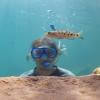





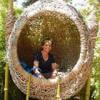



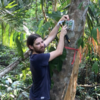
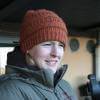
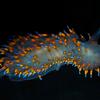











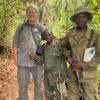






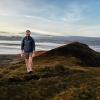






8 May 2024 10:40am
I didn't measure the difference in energy consumption whilst it's waiting between recordings. I'll do that.
Having it turn off after a few minutes is a good idea.
The electronic design around the MEMS microphone is pretty much optimised. We found that a lot of the noise is mechanical from capacitors on the board, and in the SD card, physically expanding and contracting as they balance out the voltage due to the larger current draw from the SD card. Some SD cards are much quieter than others, and we always use SanDIsk Extreme cards. The SanDisk Extreme Pro cards has much higher peak currents during write operations. The interference gets a bit stronger as the batteries run down as their increasing internal resistance causes more voltage fluctuation.